
From Queen Victoria to the modern royals
There’s nothing quite like a royal wedding. The pomp! The splendour! The feverish anticipation of the dress! Thanks to a growing mass media, from Queen Victoria to the Duchess of Sussex, a marriage in the Royal Family has been cause for wider celebration, national rejoicing and the setting of new wedding day styles and traditions. We take a look at nine royal weddings and wedding dresses from history, which all influenced the way we say ‘I do’ today.

Queen Victoria and Prince Albert
Married 10 February 1840, Chapel Royal, St James's Palace
When Queen Victoria met her cousin Prince Albert for the second time in October 1839, she quickly fell in love. Which is just as well, as the potential match had been plotted by Albert’s uncle Leopold and Victoria’s mother, the Dowager Duchess of Saxe-Coburg and Gotha, since the pair were babies.
Queen Victoria's higher status demanded that she take the initiative, so she had to be the one to propose. On 15 October, Albert was called into her presence, and fortunately he said yes!
Image: The Queen & Prince Albert's Polka, by John Brandard. © National Portrait Gallery, London.

I said to him that I thought he must be aware why I wished him to come here and that it would make me happy if he would consent to what I wished
Queen Victoria proposes to Albert in 1839, from her journal. Royal Collection Trust/© Her Majesty Queen Elizabeth II 2018.
Wedding day
Not even torrents of rain, and violent gusts of wind could spoil Victoria and Albert’s big day on 10 February 1840. The Queen's procession left Buckingham Palace for the Chapel Royal at St James's Palace, where the wedding was to take place.
The Chapel Royal was crowded with guests, men in their smartest uniforms and ladies in court dress although, as requested, without their formal trains in order to relieve congestion in the chapel. At midday, to a fanfare of trumpets, the bride's procession entered, followed by a flock of bridesmaids wearing dresses designed by the Queen.
Did you know?
Thousands of people lined the route to catch a glimpse of the royal couple, some even climbing into trees to get a better view.
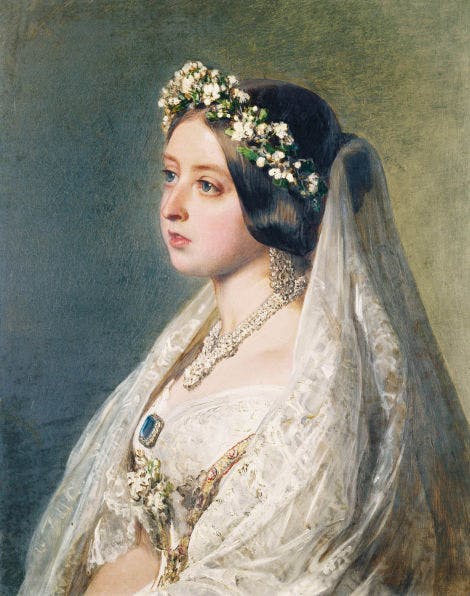
A trendsetting bride
During wedding planning, Victoria’s independent spirit revealed itself in her choice of wedding dress, as she wrote in her diary: "Talked of wearing my robes at the wedding, which I wished not". She chose instead to wear a fashionable ivory, silk and satin dress, setting a trend for royal wedding dresses which survives to this day.
Victoria and her advisers felt it was important that her entire bridal outfit should be made in Britain, using British materials. The silk satin was from Spitalfields in London and was used to make both the dress and the 5.5m (18ft) court train. The long silk train was bordered with sprays of orange blossom, matching the garlands that the young Queen wore around her head.
The custom of wearing these flowers for weddings took hold in Britain in the early 1800's, superseding the tradition of wearing roses. Princess Elizabeth (later Queen Elizabeth II), Diana, Princess of Wales and the Duchess of Cambridge all had orange blossoms in their bridal bouquets.
Image: Queen Victoria, by Franz Xaver Winterhalter 1847. Royal Collection Trust/© Her Majesty Queen Elizabeth II 2018.

A cake fit for a Queen
Queen Victoria’s confectioner at Buckingham Palace, Mr John Mauditt, made the wedding cake. It was on a suitably vast scale measuring nearly 3m (9ft) in circumference and weighing more than 140kg (about 22 stone).
It was decorated with figures of Queen Victoria and Prince Albert dressed in ancient Greek costume, and iced festoons of entwined orange blossom and sprigs of myrtle.
This was just the main cake – more smaller cakes were baked, so that pieces could be sent to people.
Image: Royal Collection Trust/© Her Majesty Queen Elizabeth II 2018
Princess Alexandra of Denmark and Albert Edward, Prince of Wales
Married 10 March 1863, St George's Chapel, Windsor Castle
Two years after the death of Prince Albert in 1861, and with Queen Victoria still grief-stricken, their eldest son Albert Edward married Princess Alexandra of Denmark. Despite national mourning, it was difficult to suppress the great public interest in the wedding of the heir to the throne.
Did you know?
Queen Victoria took no part in the ceremony. Deep in mourning, dressed in black, she watched the ceremony in private, from a seat high above the choir in St George's Chapel, Windsor Castle.

Made in England
Alexandra had been given a beautiful dress of Brussels lace as a wedding present by King Leopold of Belgium. However, to wear a non-British dress was considered inappropriate, so she had to put this garment aside.
Instead a dress of English silk was made in London, giving the royal family the opportunity to boost British manufacturers, who also provided the lavish trimmings of Honiton lace from Devon, yards of tulle and bouquets of orange blossom and myrtle.
Image: Alexandra, Princess of Wales and Albert Edward, Prince of Wales on their wedding day, 10 March 1863. © National Portrait Gallery, London.
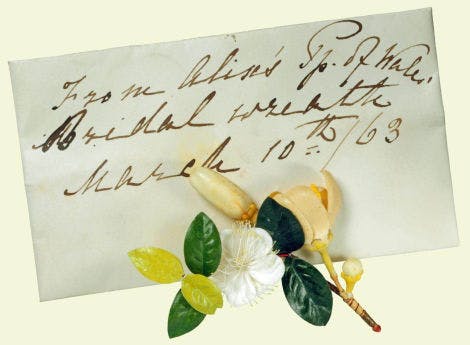
Preserved for posterity
Like the dress trimmings, the wreath holding Princess Alexandra's veil in place was made of artificial orange blossom. Queen Victoria carefully preserved a sprig in this envelope.
Image: Royal Collection Trust/© Her Majesty Queen Elizabeth II 2018.

Princess Mary and Prince George
Married 6 July 1893, Chapel Royal, St James's Palace
By the time Queen Victoria's grandson Prince George (later George V) married Princess Mary of Teck on 6 July 1893, Queen Victoria had recovered sufficiently from her grief to describe her ‘greatest satisfaction’ at the match.
Only a year previously, Mary (known affectionately as ‘May’ of Teck) had been engaged to Albert Victor, the eldest son of the Prince and Princess of Wales. The wedding day had been set for 27 February 1892 when tragedy struck - on 14 January the Prince died of influenza.
Queen Mary (1867-1953),when Princess Victoria Mary of Teck c. 1887. Royal Collection Trust/© Her Majesty Queen Elizabeth II 2018.
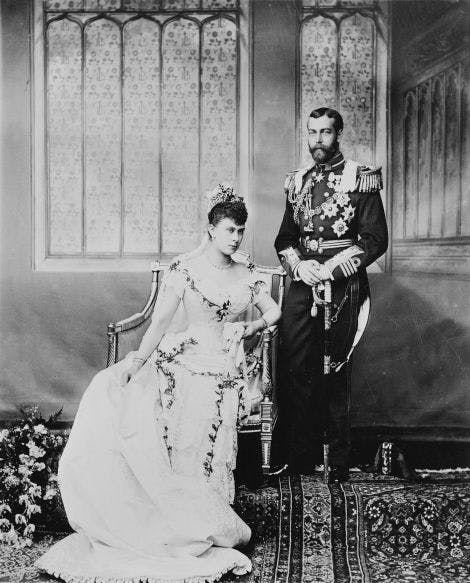
A bittersweet day
Prince George, second son of the Prince and Princess of Wales, suddenly found himself heir to the throne and his matrimonial plans assumed a national importance.
He and Princess Mary comforted each other in their grief, and in May 1893 Prince George, recently created the Duke of York, proposed. The Chapel Royal at St James's Palace was chosen as the venue.
Public sympathy for Mary after the death of Prince Albert Victor was transformed to delight, as plans for the marriage to Prince George were announced. After the ceremony, the bride and groom returned to Buckingham Palace, where a wedding breakfast was served for 400 guests.
Image: Royal Collection Trust/© Her Majesty Queen Elizabeth II 2018.
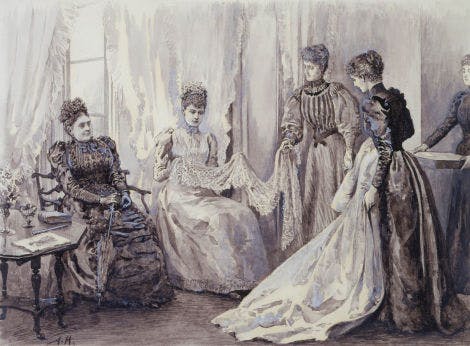
The tremendous trousseau
A wedding trousseau is a collection of outfits for the bride, and naturally Princess Mary needed a whole new wardrobe for her forthcoming wedding. The outfits made for her at the time of her first engagement in 1891 were no longer in fashion. Princess Mary’s aunt, Grand Duchess Augusta of Mecklenburg-Strelitz, contributed no less than £1,000 towards her niece’s fresh trousseau.
Everything was carefully chosen to be British-made, and on a generous scale. The bride could choose from 40 outdoor suits, 15 ball dresses, a variety of bonnets, shoes and much more. Scotland created tweeds, Irish factories supplied poplin and lace, whilst English manufacturers created silk dresses and hats.
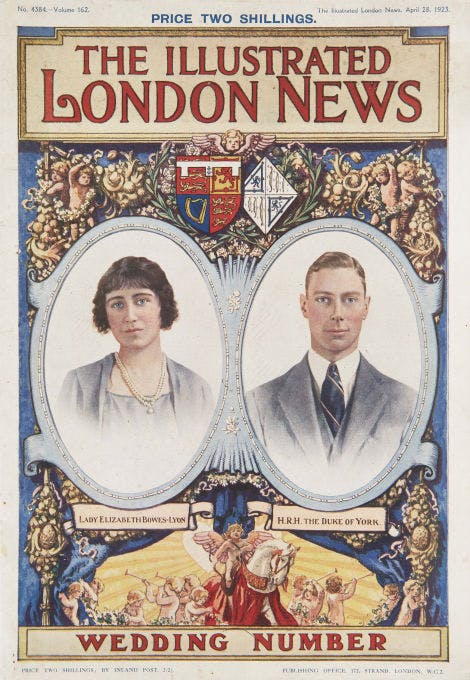
Queen Elizabeth The Queen Mother and King George VI
Married 26 April 1923, Westminster Abbey
The first of George V’s children to marry was Princess Mary in 1922. One of her bridesmaids, Lady Elizabeth Bowes-Lyon, caught the eye of the King's second son, Prince Albert, Duke of York. She agreed to marry him and the date for their wedding was set for 26 April 1923.

'The simplest [dress] ever made for a royal wedding'
The bride's dress was described by The Times as ‘the simplest ever made for a royal wedding'. Made of chiffon moire, the fabric was specially dyed to match Elizabeth’s veil, which has been lent by Queen Mary. The dress had a deep, square neckline, with a bodice cut straight to the waist. Down the front of the dress was a single appliquéd bar of silver lamé with horizontal bars arranged over the bodice. Each bar was decorated and edged with gold embroidery and pearl beads.
Image: Lady Elizabeth Bowes-Lyon leaving 17 Bruton Street, her family home in London on her wedding day 26 April 1923. © Historic Royal Palaces.
Queen Elizabeth II and Prince Philip, Duke of Edinburgh
Married 20 November 1947, Westminster Abbey
On 9 July 1947 the Court Circular published the announcement of the marriage of Princess Elizabeth and Prince Philip. Post-war Britain went into a flurry of excitement. The country was impoverished after the Second World War and society had changed. The wedding of the King's elder daughter seemed to herald better times to come. The date was set for 20 November 1947.
Did you know?
Princess Elizabeth and the Duke of Edinburgh had 12 official wedding cakes. As food rationing was still in force, ingredients were sent to the Princess from overseas.
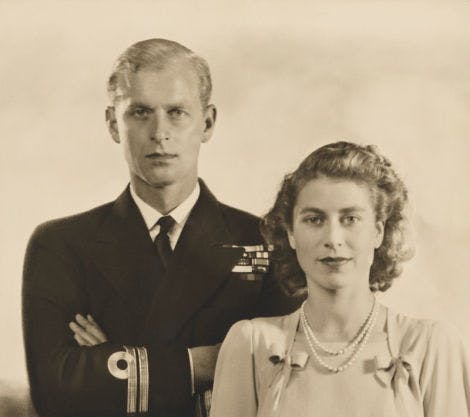
The King and Queen announce the betrothal of their dearly beloved daughter The Princess Elizabeth to Lieutenant Philip Mountbatten RN
Court Circular, 9 July 1947. © William Hustler and Georgina Hustler / National Portrait Gallery, London
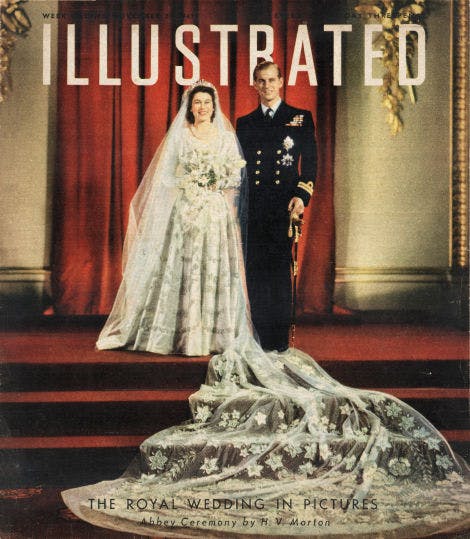
A race to finish the dress
Fashion designer Norman Hartnell was asked to submit designs for Princess Elizabeth’s wedding dress soon after the engagement was announced.
By August, he learnt that he had been given the prestigious commission.
He had less than three months to make the dress and train; the dress was delivered to Buckingham Palace on the very eve of the wedding.
Image: © John Frost Newspapers / Mary Evans Picture Library

Perfect for a princess
The dress was the subject of intense media speculation. Hartnell white-washed the windows of his workroom, but some aspects of the dress design leaked out. The dress was still, however, a triumph.
Made of satin, it was a one-piece princess style with a fitted bodice. The train was 4.5m (15ft) long and decorated with satin, pearl and diamanté white roses, orange blossom and jasmine.
Image: © Illustrated London News Ltd/Mary Evans

National celebration
At 11.16 am, Princess Elizabeth left Buckingham Palace with the King and drove to Westminster Abbey. Although the post-war austerity had limited the number of decorations, the number of spectators who filled the streets was greater than ever before. Crowds outside Buckingham Palace were rewarded with the appearance of Princess Elizabeth and Prince Philip on the balcony after the ceremony.
Image: © Mary Evans / Photo Union Collection

Princess Margaret and Antony Armstrong-Jones
Married 6 May 1960, Westminster Abbey
Princess Margaret, an acclaimed beauty and one of the most fashionable women in London, did not disappoint when she married society photographer Antony Armstrong-Jones in May 1960. Royal favourite Norman Hartnell was once again asked to design the dress. He was greatly admired by the Princess, who said that he was ‘always so good at getting the balance right’.
He certainly got this stunning dress right. ‘It seems as if she moved in a soft white cloud’ gushed a journalist in The Times.
Image: Princess Margaret on her wedding day, photographed by Cecil Beaton. © Victoria and Albert Museum, London.
Princess Diana and Prince Charles
Married 29 July 1981, St Paul's Cathedral
On 29 July 1981 the Daily Express reported that ‘the whole world stopped for the wedding of the Prince of Wales and Lady Diana Spencer’.
The wedding of the heir to the throne was an extraordinary media event, with over 80 broadcasting organisations from 50 countries taking live pictures from the BBC. It was the first time a Prince of Wales had married for over 100 years, but it was more the ‘fairy-tale’ nature of the match and the romance of the occasion that transfixed millions of people across the globe.
Did you know?
The train of Princess Diana's wedding dress was over 7m (25ft) long.
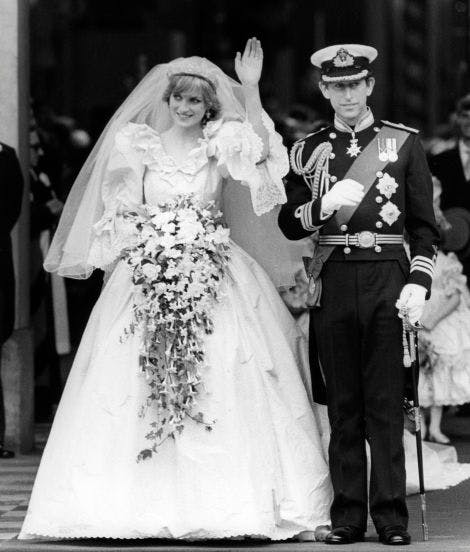
An unforgettable dress
Fashion designers David and Elizabeth Emanuel were chosen to design the bride's dress. Although she had worn some of their designs before, Lady Diana's choice of this young couple was a break with tradition.
Naturally, intense speculation surrounded the design of the wedding dress and journalists tried every trick to get a sneak preview. The Emanuels felt besieged in their studio, where the window blinds were drawn and security was very tight.
Image: The Prince and Princess of Wales emerge from St Paul's Cathedral, 29 July 1981. ©Heritage-Images.com
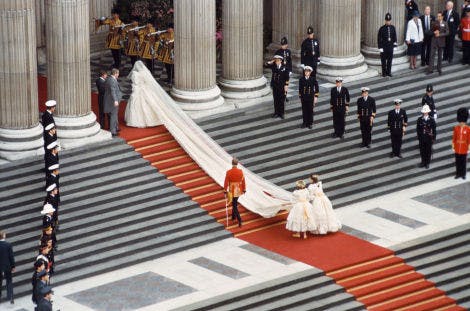
The dress that made the day
The Emanuels wanted to transform the shy, young Lady Diana into a fairy-tale princess and certainly made her wedding dress memorable. One of the most abiding memories for the millions watching around the globe on that July day must be Diana emerging from her carriage and walking up to St Paul’s Cathedral, with her magnificent ivory train flowing down the steps in her wake.
Image: Lady Diana Spencer arrives at St Pauls Catherdral with train of dress streaming behind her. © GRANGER / GRANGER — All rights reserved
William, Prince of Wales and Catherine, Princess of Wales
Married 29 April 2011, Westminster Abbey
Despite intense speculation, Catherine Middleton and her designer Sarah Burton managed to keep this remarkable dress a secret until the wedding day. The dress had to fulfill the expectations of millions of people and also echo the conventions long established for royal wedding dresses, including the use of British materials and skills. But what would it look like?
Did you know?
Only when Catherine stepped from the Rolls-Royce that had driven her and her father to Westminster Abbey did everyone have the answer they craved.

A fashion moment
"It’s a fashion moment!" exclaimed the BBC commentator.
Image: Catherine Middleton arriving at Westminster Abbey with her Maid of Honour Philippa Middleton.© BEN STANSAL /AFP/Getty Images
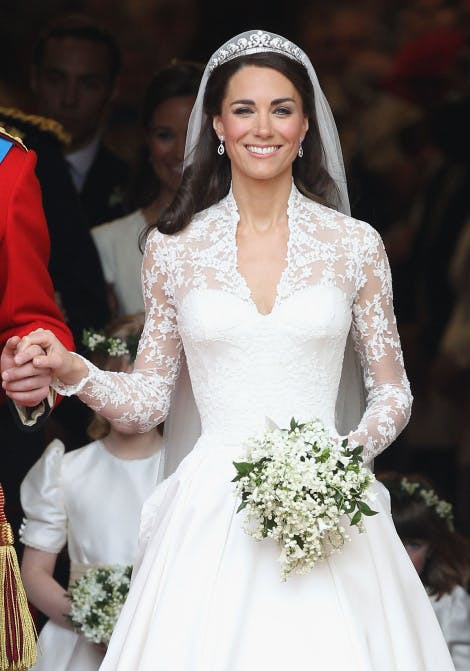
Classic British design
Designed by Sarah Burton at Alexander McQueen, the dress was of ivory satin with a boned bodice and the hips padded, with a full skirt and modest train. The lace was handworked using a traditional Irish technique by members of the Royal School of Needlework, based at Hampton Court Palace. Holding her veil in place, Catherine wore the exquisite diamond Halo Tiara, which had been lent to her by Queen Elizabeth II.
Image: The Princess of Wales leaving Westminster Abbey. © Chris Jackson/Getty Images
Modern British monarchy
After the ceremony, the Princess of Wales walked back down the aisle with her husband, curtsying to the Queen before emerging from the Abbey as consort to the second in line to the throne.
The waiting crowd went wild as the couple made their way from Westminster Abbey to Buckingham Palace in an open carriage.
The Duke and Duchess of Sussex
Married 19 May 2018, St George's Chapel, Windsor Castle
The wedding of Prince Harry to Meghan Markle also caught the attention of millions of people across the globe. Like that of her sister-in-law the Duchess of Cambridge, the bride’s sartorial choice remained a secret until her arrival at St George’s Chapel, Windsor Castle.
The dress was designed by British designer Clare Waight Keller, Artistic Director of French fashion house Givenchy. The pure lines and lack of embellishment on the wedding dress created a timeless elegance and simplicity while keeping with the heritage of the Parisian brand.The focus of the wedding dress lay on the open bateau neckline and the five-metre long veil.
Did you know?
The dress was constructed using only six precise seams that sculpted the waist and formed a soft train at the back.
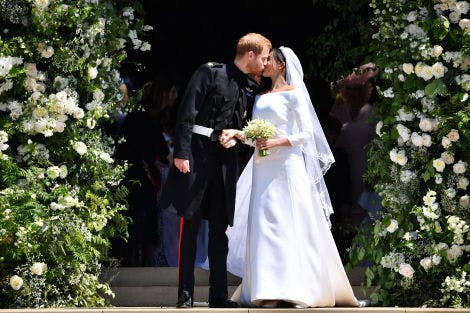
Wedding symbols
Following the tradition of incorporating national symbols, the veil was edged with the distinctive flora of each Commonwealth country – 53 in total. There was also wintersweet - a flower found in the grounds of Kensington Palace - and bushels of wheat, symbolising love and charity.
To hold the veil in place, the bride wore Queen Mary's diamond bandeau tiara. It was made in 1932 and features at its centre a diamond brooch, originally given to Queen Mary as a wedding present in 1893.
Image: © Ben Stanstall/AFP/Getty Images
Watch The Wedding of King George VI to Lady Elizabeth Bowes-Lyon Footage
Lady Elizabeth made her way with her attendants to Westminster Abbey, pausing inside to lay her bouquet on the Tomb of the Unknown Warrior in honour of the war dead. Watch the original footage on YouTube.
BROWSE MORE HISTORY AND STORIES
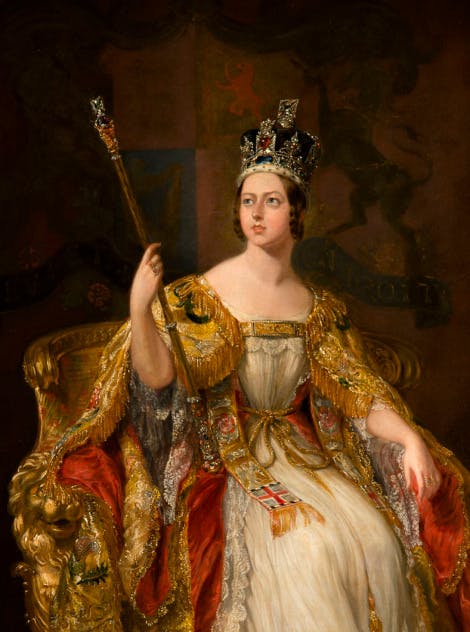
Queen Victoria
From pampered princess to elderly empress: wife, mother and queen
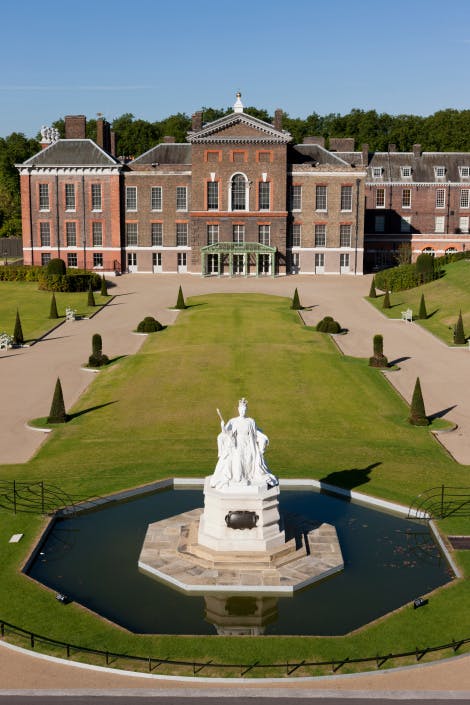
The story of Kensington Palace
An elegant retreat for Britain's royal family
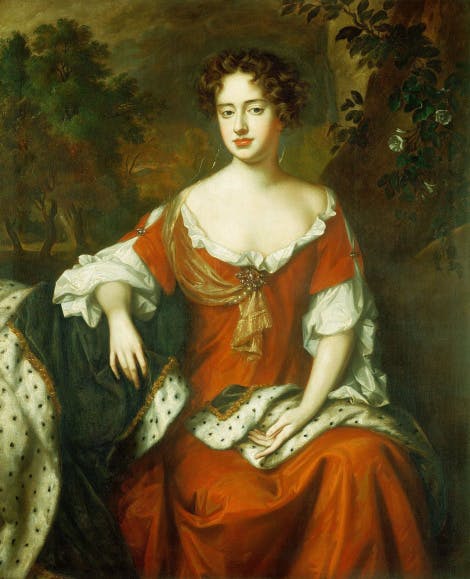
Queen Anne
A surprisingly successful monarch, despite ill health and tragedy
EXPLORE WHAT'S ON

- Things to see
The Palace Gardens
Walk in the footsteps of royalty in the beautiful Kensington Palace gardens.
- Open Daily
- 10:00 - 18:00
- Kensington Palace
- Free

- Things to see
Victoria: A Royal Childhood
Discover the story of Princess Victoria, the young girl destined to be queen, in the rooms where she was born and raised at Kensington Palace.
- Open
- In line with palace opening hours
- Kensington Palace
- Included in palace admission (members go free)

- Things to see
The Sunken Garden
The Sunken Garden at Kensington Palace displays elegant floral planting and a statue of Diana, Princess of Wales.
- Viewed from Cradle Walk only
- Open daily, 10:00-18:00. Last entry 17.45.
- Kensington Palace
- Free
Shop online
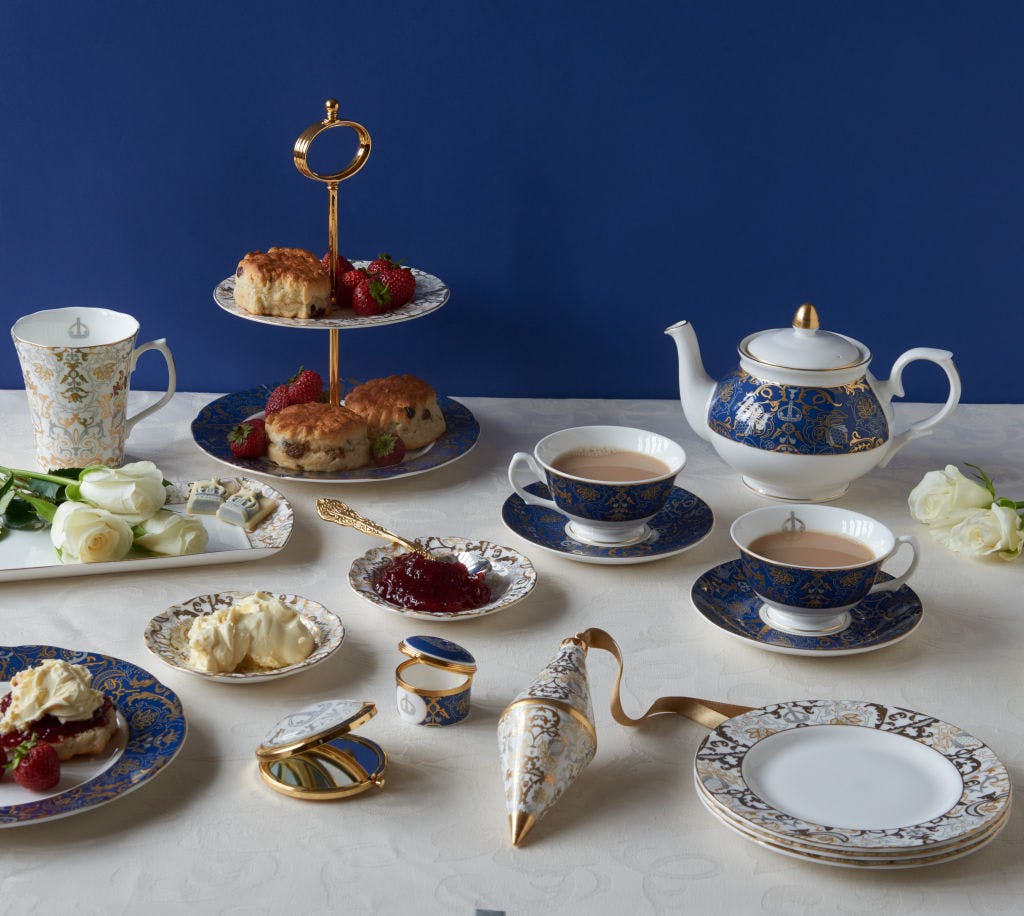
Shop Queen Victoria gifts
Exclusively designed for Historic Royal Palaces, our Queen Victoria gifts are inspired by iconic symbols from Queen Victoria's reign.
From £2.50
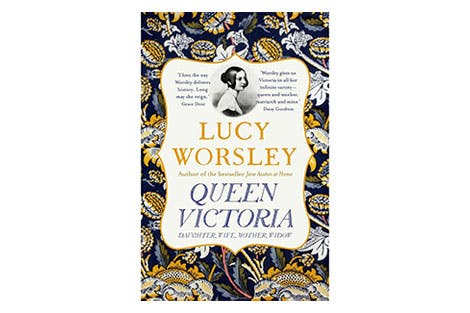
Queen Victoria: Daughter, Wife, Mother, Widow
Lucy Worsley showcases Queen Victoria's life through 24 key days. Through diaries, letters and more, we discover a personal and close up view of Victoria's life and see the very heart of her reign.
£10.99
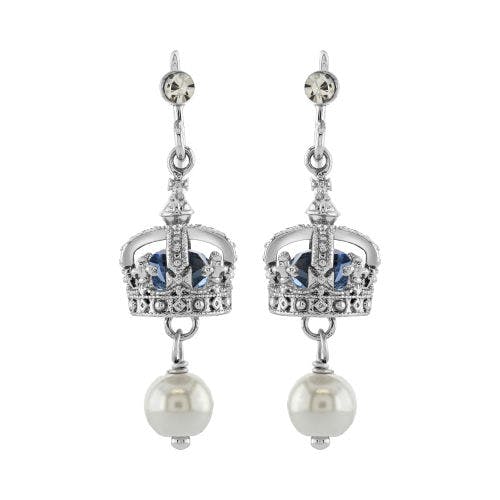
Queen Victoria's small diamond crown pearl drop earrings
Exclusively available from Historic Royal Palaces, these wonderful earrings are inspired by Queen Victoria's iconic small diamond crown.
£35.00


